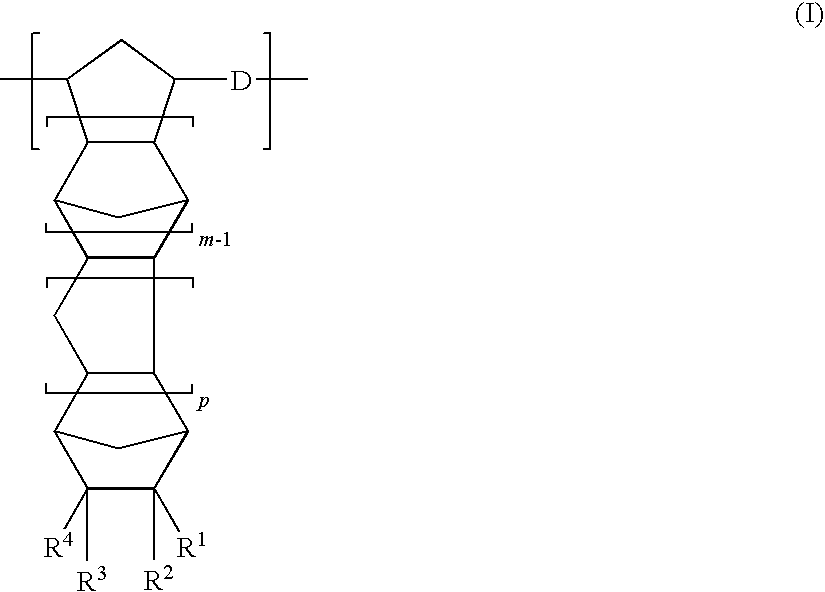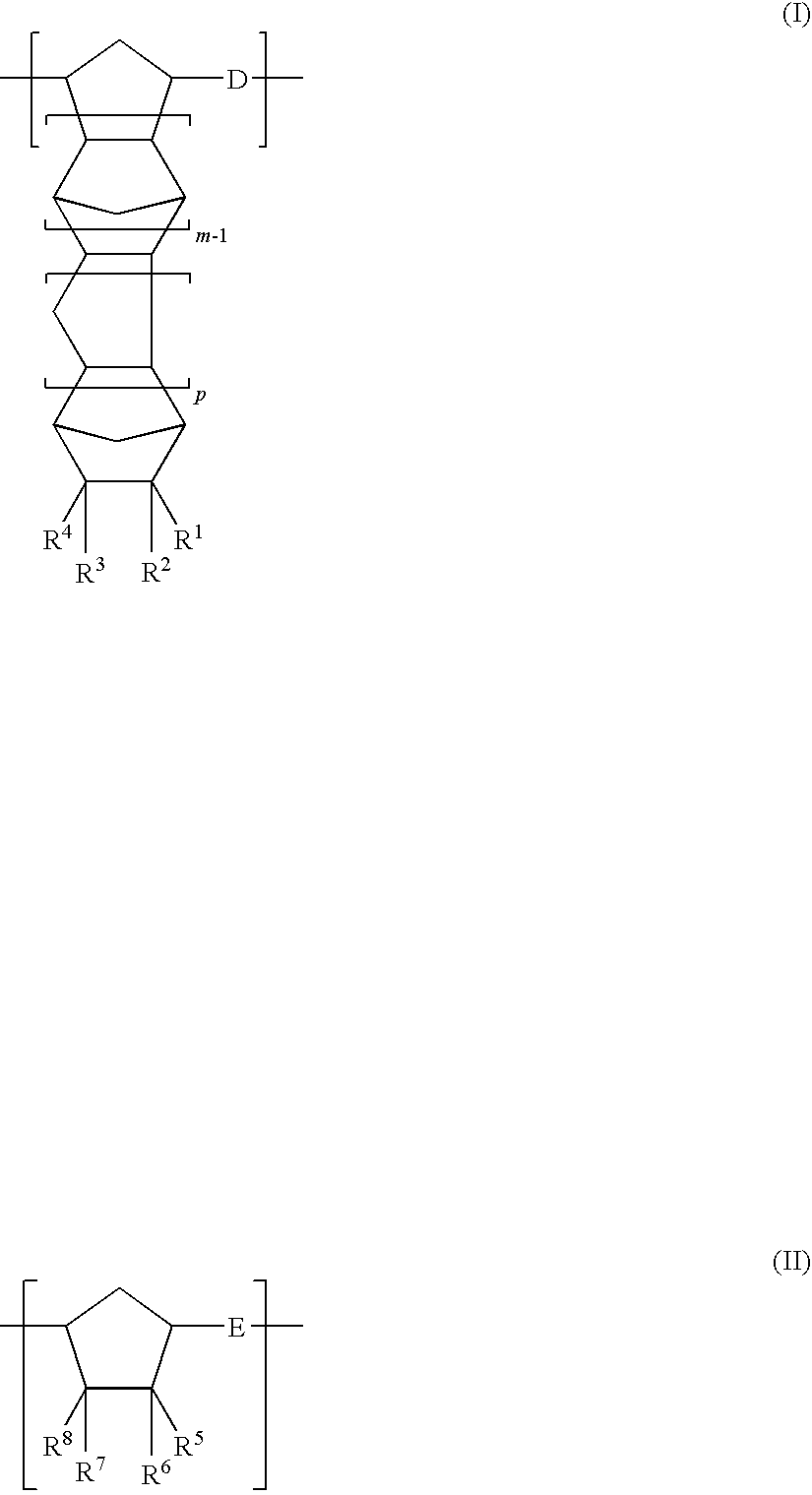Optical film, polarizing plate, and liquid crystal display device
- Summary
- Abstract
- Description
- Claims
- Application Information
AI Technical Summary
Benefits of technology
Problems solved by technology
Method used
Image
Examples
synthesis example 1
[0277]A nitrogen-purged reaction vessel was charged with 250 parts of 8-methyl-8-methoxycarbonyltetracyclo [4.4.0.12,5.17,10]-3-dodecene (specific monomer), 18 parts of 1-hexene (molecular weight modifier), and 750 parts of toluene (solvent for ring-opening polymerization reaction). This solution was heated to 60° C. Thereafter, 0.62 part of a toluene solution of triethyl aluminum (1.5 mol / L) as the polymerization catalyst and 3.7 parts of a toluene solution (concentration=0.05 mol / L) of tungsten hexachloride modified with t-butanol and methanol (t-butanol:methanol:tungsten=0.35 mol:0.3 mol:1 mol) were added to the solution. The resultant solution was heated at 80° C. under agitation for 3 hours to bring about ring-opening polymerization. Thus, a ring-opening polymer solution was obtained. The polymer conversion in this polymerization reaction was 97%, and the thus obtained ring-opening polymer had an inherent viscosity of 0.75 dL / g when measured in chloroform at 30° C.
[0278]Then 1,...
synthesis example 2
[0288]A hydrogenated polymer (referred to hereinafter as “resin A2”) was obtained in the same manner as that of Synthesis Example 1 except for the use of 215 parts of 8-methyl-8-methoxycarbonyltetracyclo [4.4.0.12,5.17,10]-3-dodecene, 35 parts of bicyclo [2.2.1]hept-2-ene, and 18 parts of 1-hexene (molecular weight modifier).
[0289]Measurements for the obtained resin A2 were as follows:
[0290]The hydrogenation ratio was 99.9%.
[0291]The glass transition temperature (Tg) measured by DSC was 125° C.
[0292]The polystyrene equivalent Mn measured using the GPC method (columns and solvent same as in Synthesis Example 1) was 46,000, Mw was 190,000, and molecular weight distribution (Mw / Mn) was 4.15.
[0293]The saturated water absorption at 23° C. was 0.18%.
[0294]The SP value was 19 (MPa1 / 2).
[0295]The inherent viscosity in chloroform at 30° C. was 0.69 dL / g.
[0296]The gel content was 0.2%.
synthesis example 3
[0297]A hydrogenated polymer (referred to hereinafter as “resin A3”) was obtained in the same manner as that of Synthesis Example 1 except for the use of 53 parts of tetracyclo [4.4.0.12,5.17,10]-3-dodecene, 46 parts of 8-ethylidenetetracyclo [4.4.0.12,5.17,10]-3-dodecene, 66 parts of tricyclo [4.3.0.12,5]-deca-3,7-diene, and 18 parts of 1-hexene (molecular weight modifier) and the use of cyclohexane in place of toluene as the solvent for ring-opening polymerization reaction.
[0298]Measurements for the obtained resin A3 were as follows:
[0299]The hydrogenation ratio was 99.9%.
[0300]The glass transition temperature (Tg) measured by DSC was 137° C.
[0301]The polystyrene equivalent Mn measured using the GPC method (columns and solvent same as in Synthesis Example 1) was 39,000, Mw was 158,000, and molecular weight distribution (Mw / Mn) was 4.05.
[0302]The saturated water absorption at 23° C. was 0.01%.
[0303]The SP value was 17 (MPa1 / 2).
[0304]The inherent viscosity in chloroform at 30° C. wa...
PUM
| Property | Measurement | Unit |
|---|---|---|
| Nanoscale particle size | aaaaa | aaaaa |
| Nanoscale particle size | aaaaa | aaaaa |
| Nanoscale particle size | aaaaa | aaaaa |
Abstract
Description
Claims
Application Information
 Login to View More
Login to View More - R&D
- Intellectual Property
- Life Sciences
- Materials
- Tech Scout
- Unparalleled Data Quality
- Higher Quality Content
- 60% Fewer Hallucinations
Browse by: Latest US Patents, China's latest patents, Technical Efficacy Thesaurus, Application Domain, Technology Topic, Popular Technical Reports.
© 2025 PatSnap. All rights reserved.Legal|Privacy policy|Modern Slavery Act Transparency Statement|Sitemap|About US| Contact US: help@patsnap.com



